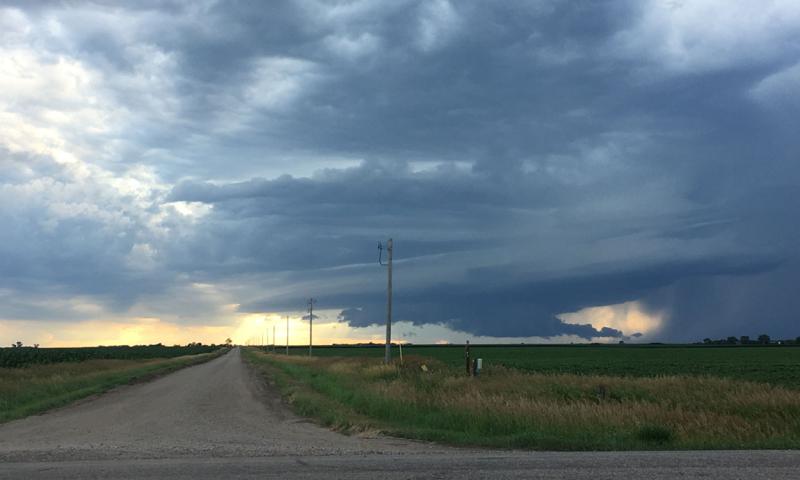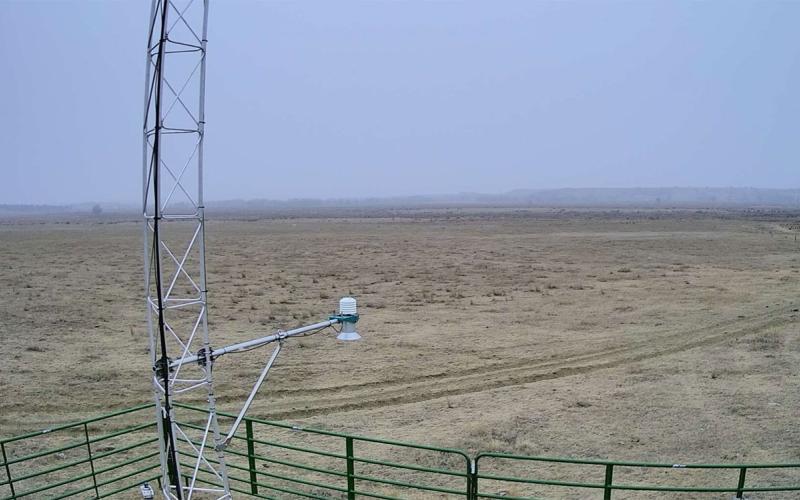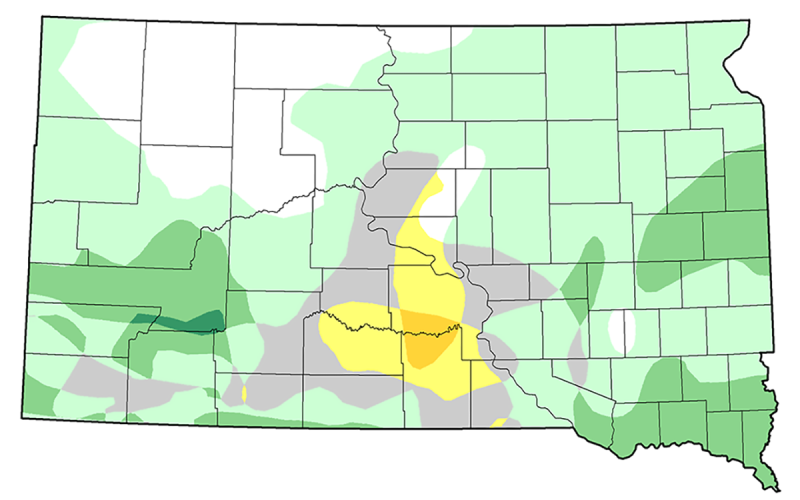
Hail, high winds, heavy rain, lightning, tornadoes. These weather phenomena are common during South Dakota summers. Billowing clouds and stormy weather are beautiful to see, especially in our evening skies, but it can also be dangerous or life-threatening.
Be prepared for severe weather.
The first step in being safe in severe weather situations is knowing the forecast. Be aware of the weather forecast each day—from the radio, on TV, NOAA National Weather Service (NWS), and social media from the news and NOAA NWS. These are all great ways to stay tuned for regular updates.
The second step is if you anticipate that severe weather will occur, think of your plans and where you might be at the time of day when weather is happening. Try to plan to be in or near a safe shelter area, ideally a fully enclosed solid structure, when severe weather might occur.
Be prepared to have at least two ways to receive warnings wherever you are. Weather radios, local TV, and NOAA NWS websites are all great ways to get warnings quickly. Cell phones may sometimes alert you, but not everyone has their settings on to receive warnings, or you may be out of cell phone range. Sirens in cities are designed only to warn those who are outdoors, and in near proximity, to take shelter. Sirens should not be relied upon as your primary storm alert, as you may not hear them indoors, you may be out of audio range, or they sometimes do not function properly. Social media is one way to look for warnings, but they are not always posted in a timely fashion when weather is very busy. Also, social media will not “push” a warning to you—you need to look for it.
Take action, find shelter.
Third, if you do get notified of a warning, take action! Current NOAA National Weather Service procedures issue a “Watch”, as an indication to be prepared in case weather turns worse. When a “Warning” is issued (either Severe Thunderstorm Warning or Tornado Warning) that is the time to take action and use your shelter. Bring your phone for communication, family members, and pets with you.
The best storm shelters are interior rooms without windows. Basements are ideal. Interior rooms are away from glass that could break and injure anyone inside, and also have more solid structured walls around them. For many homes, this is a basement bathroom or closet. Some older homes have storm shelters separate from the home, out in a bunker-like space in the yard. Some newer homes without basements may have a concrete-walled space in the garage or a room in the house. Many communities have a public storm shelter location, often in a community center. Campgrounds, parks and pools may use the bathroom facilities as a storm shelter. Places that are NOT good storm shelters include: picnic pavilions, sheds or storage buildings, tents, and campers/RVs.
If you take shelter, wait for the all clear sign, often when the NOAA warning expires. If you hear the sirens more than once, that often means that it is very severe and to take shelter immediately! The sirens do not usually issue an all clear signal. Usually you will not need to be in shelter for very long, often less than an hour, or even just minutes.
If you are outdoors during severe weather.
If you find yourself outdoors in a rural area when severe weather arrives, try to stay calm. A solid, fully enclosed structure is always best, so try to find a home, business or community center nearby.
For lightning, an enclosed vehicle or tractor with hard top is adequate until you can find better shelter or the storm passes. If you are outdoors at a park or open area, stay away from tall structures such as single trees or power poles. Wait for 30 minutes after the last thunder is heard before venturing out again into the open area. If you are out on a lake or river, get off the water as soon as possible. Water does not attract lightning, but it is great conductor of electricity.
For severe thunderstorms with hail and heavy rain, if you are in a vehicle, drive to the nearest shelter location if it is safe to do so. If you’re driving in heavy rain, pull off to the side of the road to sit out the storm. Hail may break glass so be careful of large hail. If you have extra clothing or blankets in the vehicle, you can wrap yourself to protect your skin from cuts from broken glass and stay towards the center of the vehicle. Do not take shelter in a culvert. These are designed to move water and there is a possibility that rainwater or a flash flood can rush through quickly and cause drowning. Also beware of trees, as these may be broken in high winds and hurt anyone below.
For a tornado, try your very best to get away from the tornado and take shelter. If you have time, watch the tornado for a while until you know what direction it is moving, and go away from it. If it looks like it is not moving or getting larger, then it is coming towards you! Go in a different direction! If you are driving in a vehicle, do not park under a bridge. Current advice is to get out of your vehicle, go far away into a low-lying area or ditch to take cover to avoid flying debris and to be out of the way if your vehicle blows over. The same is true if you are in a tractor or other farm machinery. If you are in your vehicle as the tornado passes over, wear your seatbelt in the event your vehicle is blown away or lifted.
For more information on severe weather safety, visit the NOAA National Weather Service safety page.


